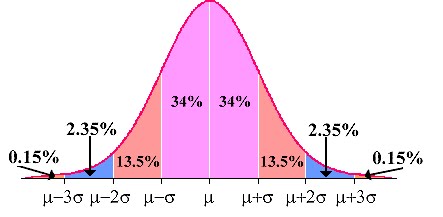More about the Empirical rule and normal distribution
Statistical Empirical Rule
The normal distribution is symmetrical.
Therefore if 68% of the data fall within 1 standard deviation, this means that half of that falls between the mean minus 1 standard deviation with the other half falling between the mean plus 1 standard deviation. In other words 34% fall 1 standard deviation below the mean and 34% fall 1 standard deviation above the mean.
This can apply to 2 standard deviations above and below as well as 3 standard deviations above and below.
Example: Suppose I have standardized test scores with a mean of 720 and a standard deviation of 20. I know that 68% of the data will fall between 700-740. (one standard deviation above and below the mean) Based on the fact the normal distribution is symmetric I can also say that 34% of the data fall between 700-720 with the other 34% falling between 720-740.
Using this concept I know that 95% of the data fall between 680-760. (2 standard deviations above and below the mean) I also know that 47.5% fall between 680-720 with the other 47.5% falling between 720-760.
Again using this concept I know that 99.7 % of the data fall between 660-780 (3 standard deviations above and below the mean). I also know that 49.85% fall between 660-700 with the other 49.85% falling between 720-780.
Since the normal distribution is symmetrical, 50% of the data will fall below the mean and 50% of the data will fall above the mean.


Comments (0)